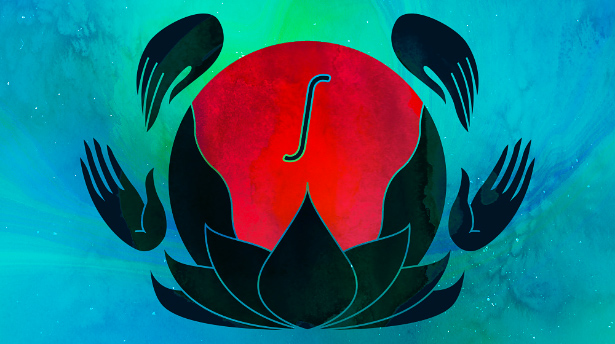What No New Particles Means for Physics

Olena Shmahalo/Quanta Magazine
Introduction
Physicists at the Large Hadron Collider (LHC) in Europe have explored the properties of nature at higher energies than ever before, and they have found something profound: nothing new.
It’s perhaps the one thing that no one predicted 30 years ago when the project was first conceived.
The infamous “diphoton bump” that arose in data plots in December has disappeared, indicating that it was a fleeting statistical fluctuation rather than a revolutionary new fundamental particle. And in fact, the machine’s collisions have so far conjured up no particles at all beyond those catalogued in the long-reigning but incomplete “Standard Model” of particle physics. In the collision debris, physicists have found no particles that could comprise dark matter, no siblings or cousins of the Higgs boson, no sign of extra dimensions, no leptoquarks — and above all, none of the desperately sought supersymmetry particles that would round out equations and satisfy “naturalness,” a deep principle about how the laws of nature ought to work.
“It’s striking that we’ve thought about these things for 30 years and we have not made one correct prediction that they have seen,” said Nima Arkani-Hamed, a professor of physics at the Institute for Advanced Study in Princeton, N.J.
The news has emerged at the International Conference on High Energy Physics in Chicago over the past few days in presentations by the ATLAS and CMS experiments, whose cathedral-like detectors sit at 6 and 12 o’clock on the LHC’s 17-mile ring. Both teams, each with over 3,000 members, have been working feverishly for the past three months analyzing a glut of data from a machine that is finally running at full throttle after being upgraded to nearly double its previous operating energy. It now collides protons with 13 trillion electron volts (TeV) of energy — more than 13,000 times the protons’ individual masses — providing enough raw material to beget gargantuan elementary particles, should any exist.
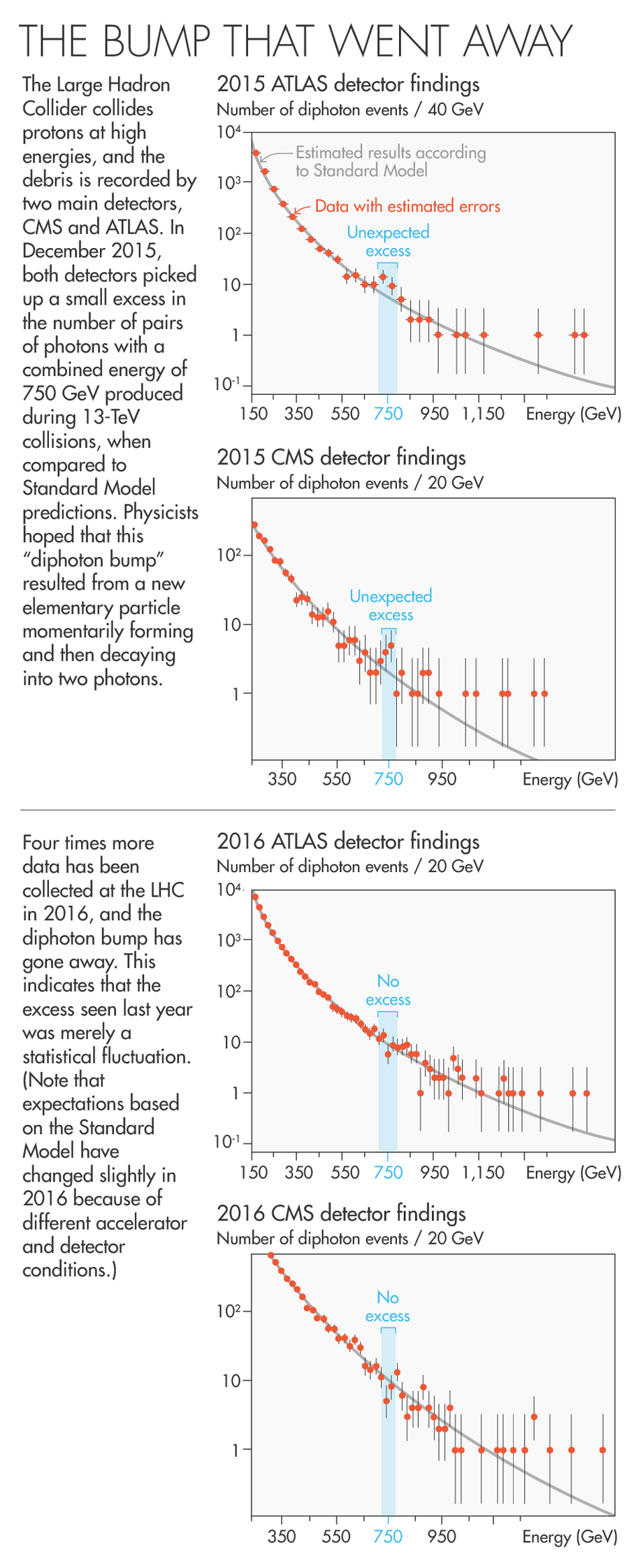
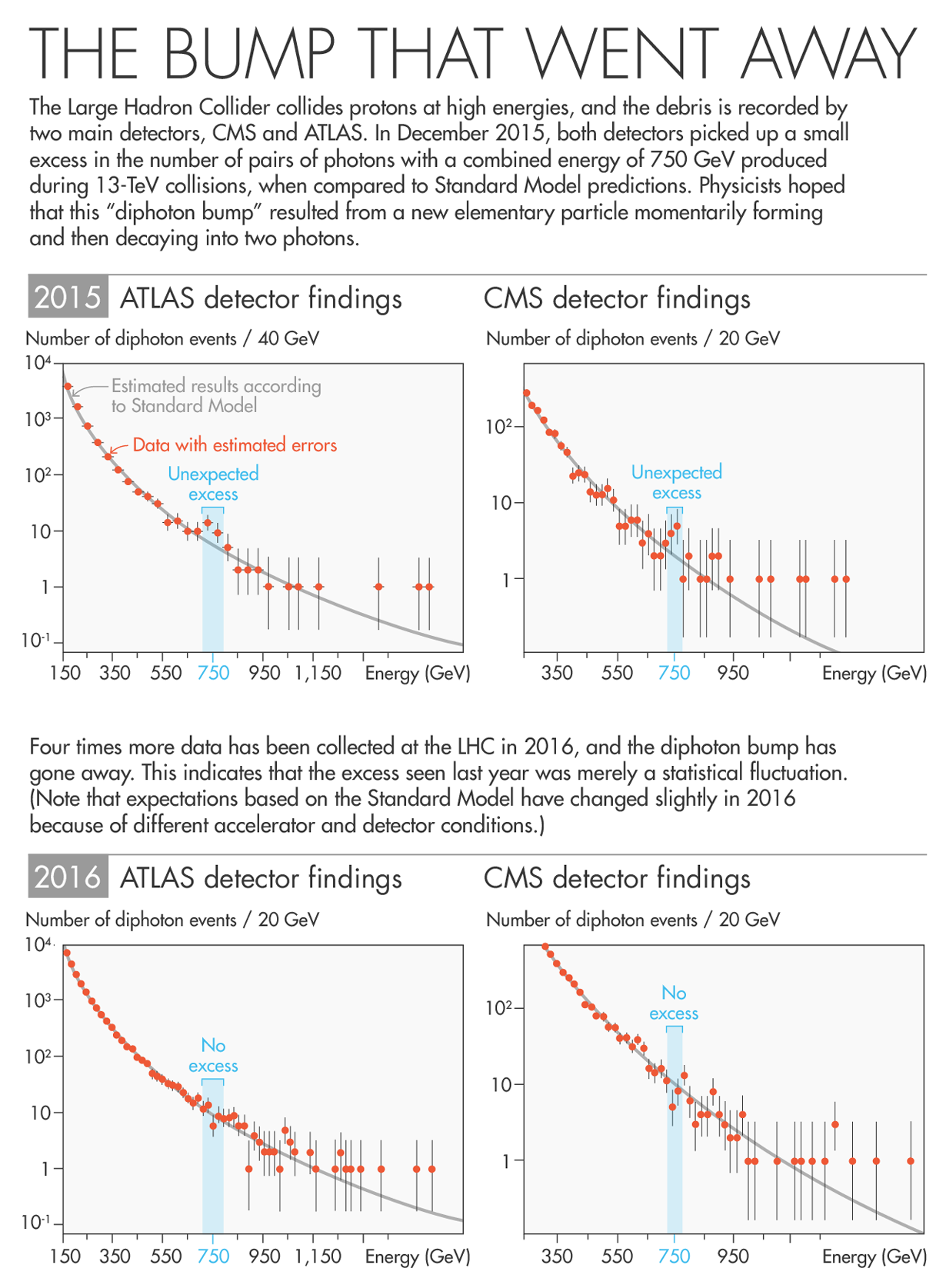
Lucy Reading-Ikkanda for Quanta Magazine
So far, none have materialized. Especially heartbreaking for many is the loss of the diphoton bump, an excess of pairs of photons that cropped up in last year’s teaser batch of 13-TeV data, and whose origin has been the speculation of some 500 papers by theorists. Rumors about the bump’s disappearance in this year’s data began leaking in June, triggering a community-wide “diphoton hangover.”
“It would have single-handedly pointed to a very exciting future for particle experiments,” said Raman Sundrum, a theoretical physicist at the University of Maryland. “Its absence puts us back to where we were.”
The lack of new physics deepens a crisis that started in 2012 during the LHC’s first run, when it became clear that its 8-TeV collisions would not generate any new physics beyond the Standard Model. (The Higgs boson, discovered that year, was the Standard Model’s final puzzle piece, rather than an extension of it.) A white-knight particle could still show up later this year or next year, or, as statistics accrue over a longer time scale, subtle surprises in the behavior of the known particles could indirectly hint at new physics. But theorists are increasingly bracing themselves for their “nightmare scenario,” in which the LHC offers no path at all toward a more complete theory of nature.
Some theorists argue that the time has already come for the whole field to start reckoning with the message of the null results. The absence of new particles almost certainly means that the laws of physics are not natural in the way physicists long assumed they are. “Naturalness is so well-motivated,” Sundrum said, “that its actual absence is a major discovery.”
Missing Pieces
The main reason physicists felt sure that the Standard Model could not be the whole story is that its linchpin, the Higgs boson, has a highly unnatural-seeming mass. In the equations of the Standard Model, the Higgs is coupled to many other particles. This coupling endows those particles with mass, allowing them in turn to drive the value of the Higgs mass to and fro, like competitors in a tug-of-war. Some of the competitors are extremely strong — hypothetical particles associated with gravity might contribute (or deduct) as much as 10 million billion TeV to the Higgs mass — yet somehow its mass ends up as 0.125 TeV, as if the competitors in the tug-of-war finish in a near-perfect tie. This seems absurd — unless there is some reasonable explanation for why the competing teams are so evenly matched.
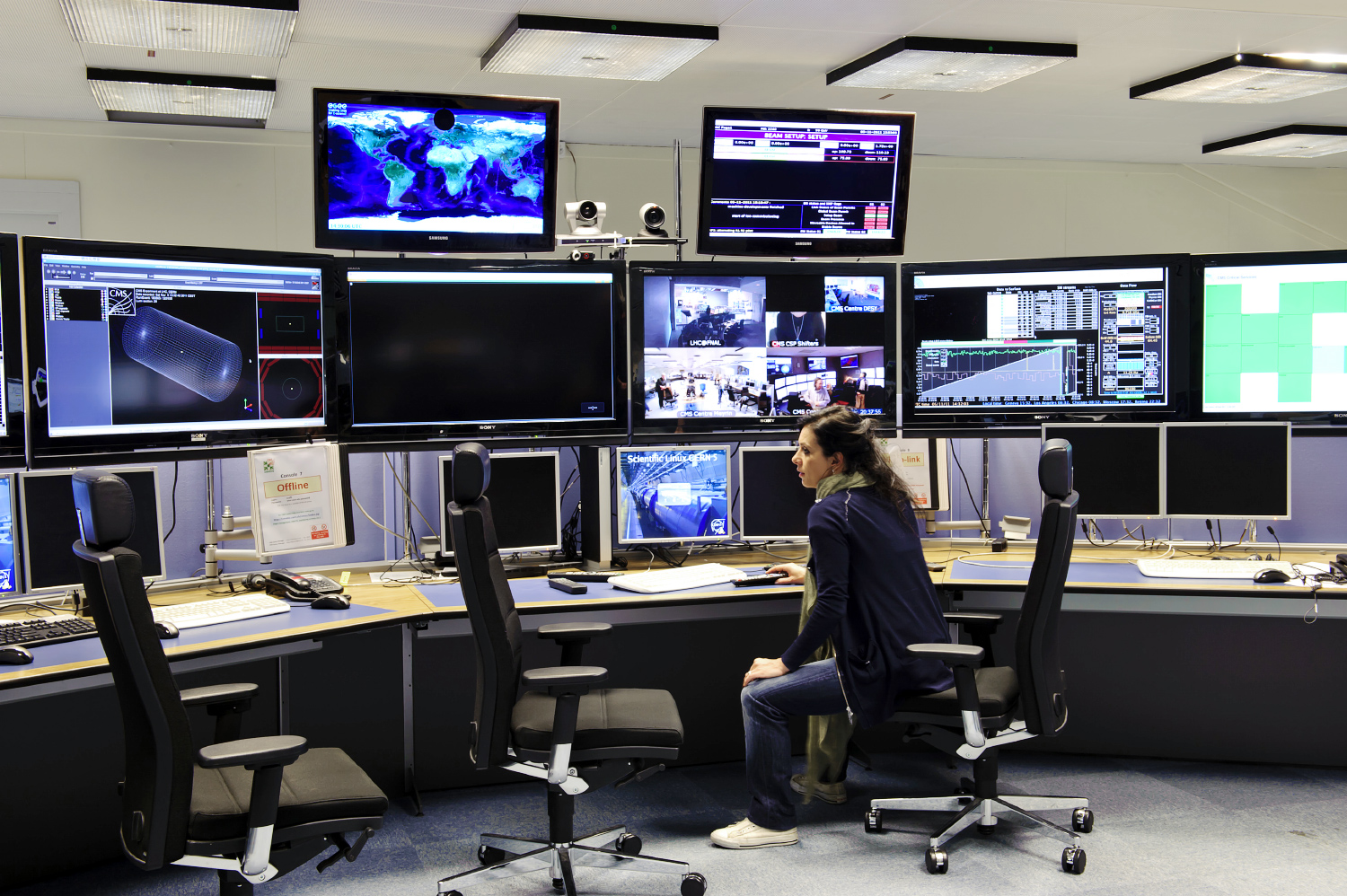
Maria Spiropulu of the California Institute of Technology, pictured in the LHC’s CMS control room, brushed aside talk of a nightmare scenario, saying, “Experimentalists have no religion.”
Courtesy of Maria Spiropulu
Supersymmetry, as theorists realized in the early 1980s, does the trick. It says that for every “fermion” that exists in nature — a particle of matter, such as an electron or quark, that adds to the Higgs mass — there is a supersymmetric “boson,” or force-carrying particle, that subtracts from the Higgs mass. This way, every participant in the tug-of-war game has a rival of equal strength, and the Higgs is naturally stabilized. Theorists devised alternative proposals for how naturalness might be achieved, but supersymmetry had additional arguments in its favor: It caused the strengths of the three quantum forces to exactly converge at high energies, suggesting they were unified at the beginning of the universe. And it supplied an inert, stable particle of just the right mass to be dark matter.
“We had figured it all out,” said Maria Spiropulu, a particle physicist at the California Institute of Technology and a member of CMS. “If you ask people of my generation, we were almost taught that supersymmetry is there even if we haven’t discovered it. We believed it.”
Hence the surprise when the supersymmetric partners of the known particles didn’t show up — first at the Large Electron-Positron Collider in the 1990s, then at the Tevatron in the 1990s and early 2000s, and now at the LHC. As the colliders have searched ever-higher energies, the gap has widened between the known particles and their hypothetical superpartners, which must be much heavier in order to have avoided detection. Ultimately, supersymmetry becomes so “broken” that the effects of the particles and their superpartners on the Higgs mass no longer cancel out, and supersymmetry fails as a solution to the naturalness problem. Some experts argue that we’ve passed that point already. Others, allowing for more freedom in how certain factors are arranged, say it is happening right now, with ATLAS and CMS excluding the stop quark — the hypothetical superpartner of the 0.173-TeV top quark — up to a mass of 1 TeV. That’s already a nearly sixfold imbalance between the top and the stop in the Higgs tug-of-war. Even if a stop heavier than 1 TeV exists, it would be pulling too hard on the Higgs to solve the problem it was invented to address.
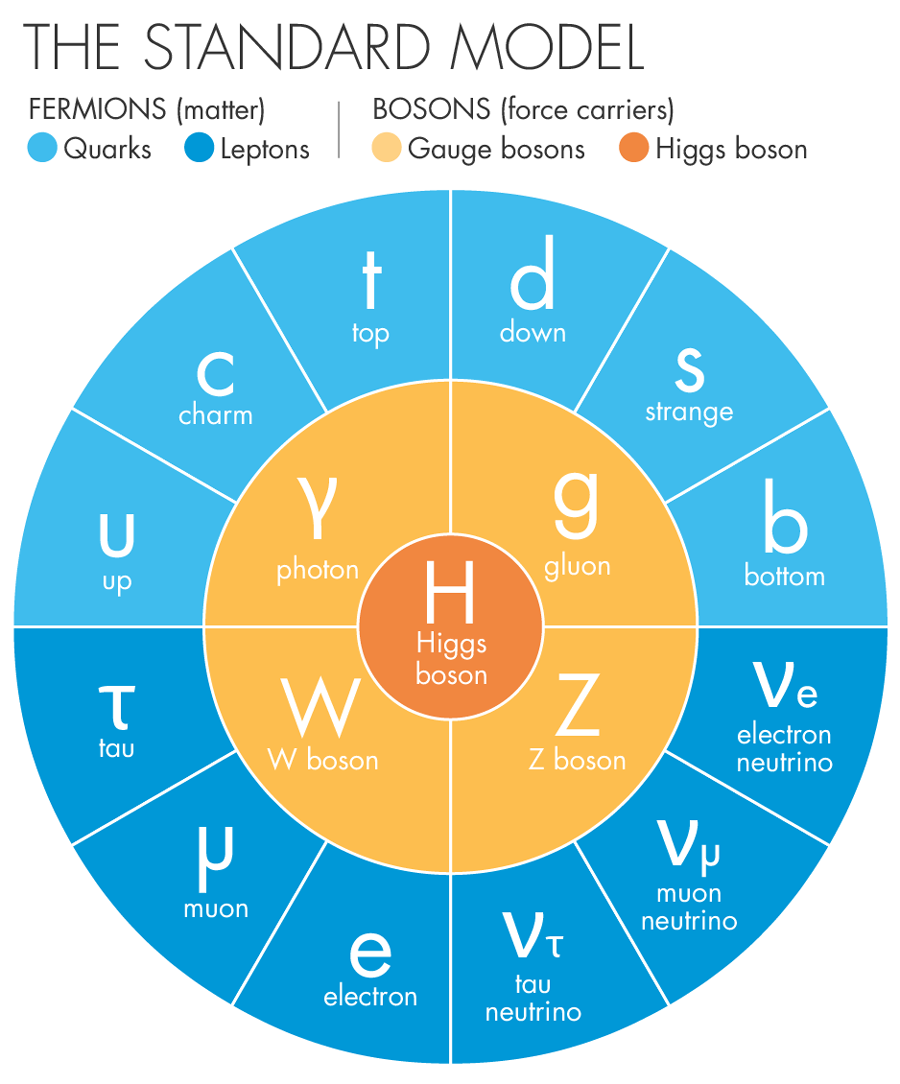
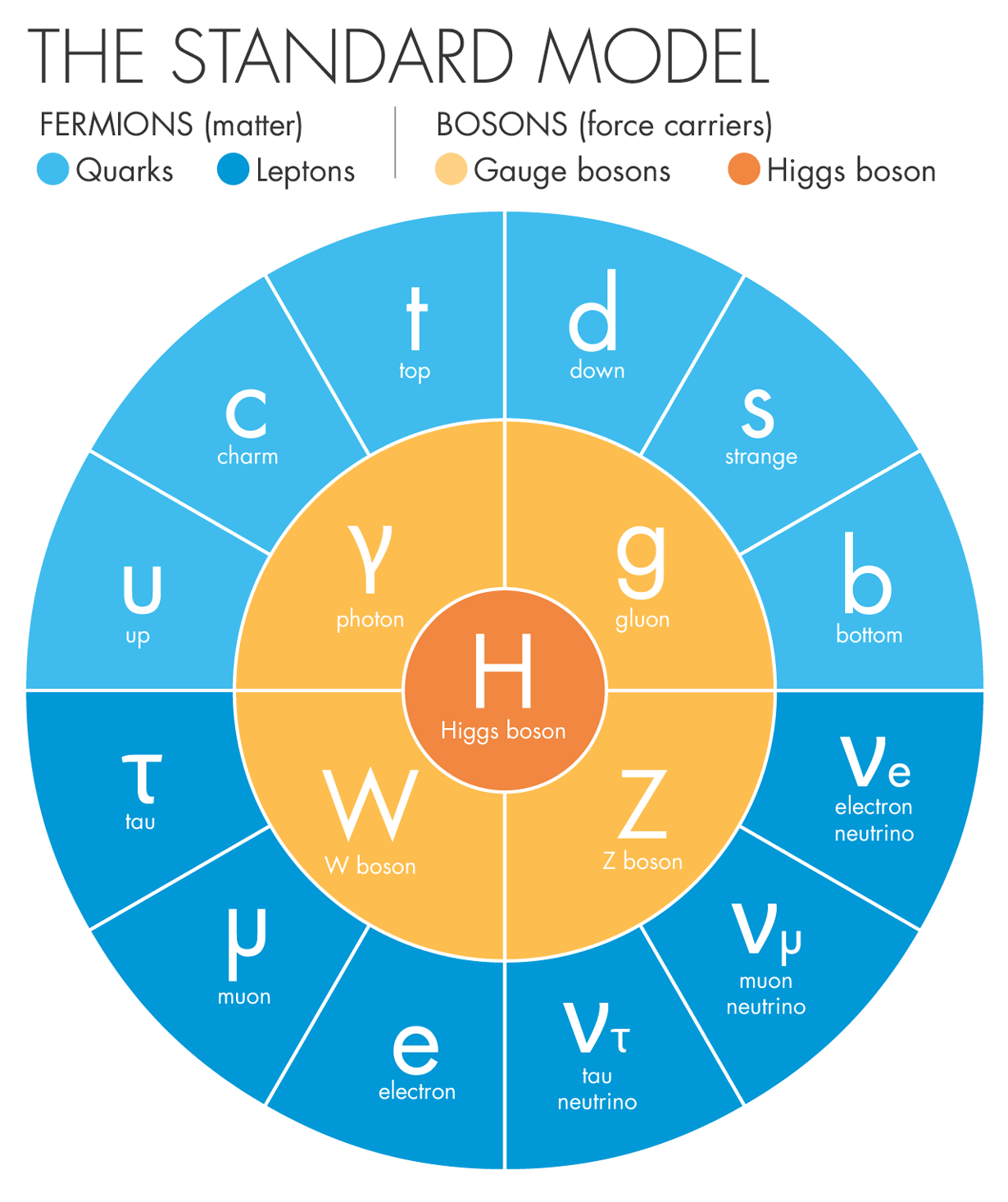
Lucy Reading-Ikkanda for Quanta Magazine
“I think 1 TeV is a psychological limit,” said Albert de Roeck, a senior research scientist at CERN, the laboratory that houses the LHC, and a professor at the University of Antwerp in Belgium.
Some will say that enough is enough, but for others there are still loopholes to cling to. Among the myriad supersymmetric extensions of the Standard Model, there are more complicated versions in which stop quarks heavier than 1 TeV conspire with additional supersymmetric particles to counterbalance the top quark, tuning the Higgs mass. The theory has so many variants, or individual “models,” that killing it outright is almost impossible. Joe Incandela, a physicist at the University of California, Santa Barbara, who announced the discovery of the Higgs boson on behalf of the CMS collaboration in 2012, and who now leads one of the stop-quark searches, said, “If you see something, you can make a model-independent statement that you see something. Seeing nothing is a little more complicated.”
Particles can hide in nooks and crannies. If, for example, the stop quark and the lightest neutralino (supersymmetry’s candidate for dark matter) happen to have nearly the same mass, they might have stayed hidden so far. The reason for this is that, when a stop quark is created in a collision and decays, producing a neutralino, very little energy will be freed up to take the form of motion. “When the stop decays, there’s a dark-matter particle just kind of sitting there,” explained Kyle Cranmer of New York University, a member of ATLAS. “You don’t see it. So in those regions it’s very difficult to look for.” In that case, a stop quark with a mass as low as 0.6 TeV could still be hiding in the data.
Experimentalists will strive to close these loopholes in the coming years, or to dig out the hidden particles. Meanwhile, theorists who are ready to move on face the fact that they have no signposts from nature about which way to go. “It’s a very muddled and uncertain situation,” Arkani-Hamed said.
New Hope
Many particle theorists now acknowledge a long-looming possibility: that the mass of the Higgs boson is simply unnatural — its small value resulting from an accidental, fine-tuned cancellation in a cosmic game of tug-of-war — and that we observe such a peculiar property because our lives depend on it. In this scenario, there are many, many universes, each shaped by different chance combinations of effects. Out of all these universes, only the ones with accidentally lightweight Higgs bosons will allow atoms to form and thus give rise to living beings. But this “anthropic” argument is widely disliked for being seemingly untestable.

Nima Arkani‐Hamed discussing theoretical physics with a colleague at the Institute for Advanced Study in Princeton, N.J.
Béatrice de Géa for Quanta Magazine
In the past two years, some theoretical physicists have started to devise totally new natural explanations for the Higgs mass that avoid the fatalism of anthropic reasoning and do not rely on new particles showing up at the LHC. Last week at CERN, while their experimental colleagues elsewhere in the building busily crunched data in search of such particles, theorists held a workshop to discuss nascent ideas such as the relaxion hypothesis — which supposes that the Higgs mass, rather than being shaped by symmetry, was sculpted dynamically by the birth of the cosmos — and possible ways to test these ideas. Nathaniel Craig of the University of California, Santa Barbara, who works on an idea called “neutral naturalness,” said in a phone call from the CERN workshop, “Now that everyone is past their diphoton hangover, we’re going back to these questions that are really aimed at coping with the lack of apparent new physics at the LHC.”
Arkani-Hamed, who, along with several colleagues, recently proposed another new approach called “Nnaturalness,” said, “There are many theorists, myself included, who feel that we’re in a totally unique time, where the questions on the table are the really huge, structural ones, not the details of the next particle. We’re very lucky to get to live in a period like this — even if there may not be major, verified progress in our lifetimes.”
As theorists return to their blackboards, the 6,000 experimentalists with CMS and ATLAS are reveling in their exploration of a previously uncharted realm. “Nightmare, what does it mean?” said Spiropulu, referring to theorists’ angst about the nightmare scenario. “We are exploring nature. Maybe we don’t have time to think about nightmares like that, because we are being flooded in data and we are extremely excited.”
There’s still hope that new physics will show up. But discovering nothing, in Spiropulu’s view, is a discovery all the same — especially when it heralds the death of cherished ideas. “Experimentalists have no religion,” she said.
Some theorists agree. Talk of disappointment is “crazy talk,” Arkani-Hamed said. “It’s actually nature! We’re learning the answer! These 6,000 people are busting their butts and you’re pouting like a little kid because you didn’t get the lollipop you wanted?”
This article was reprinted on The Atlantic.com.





